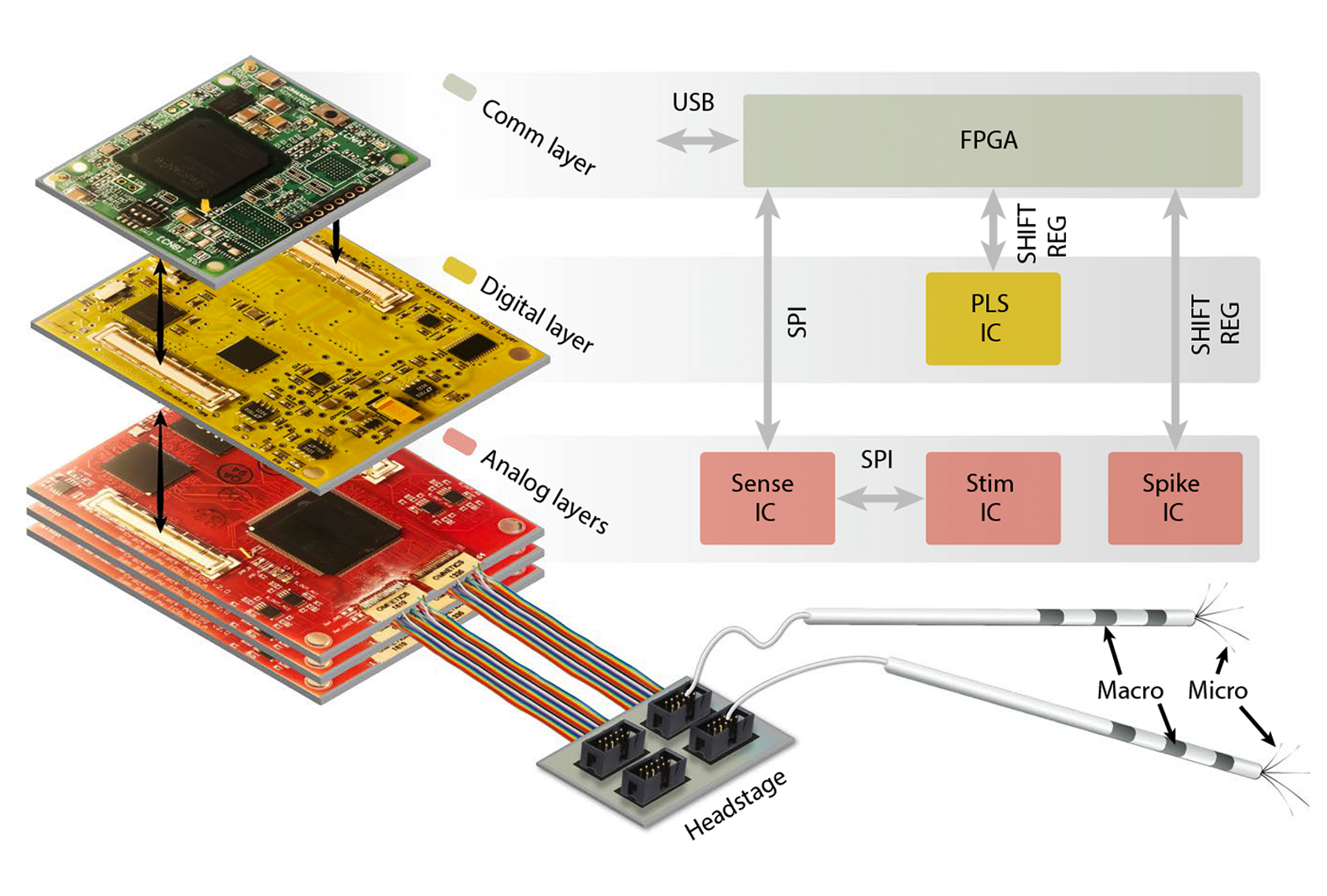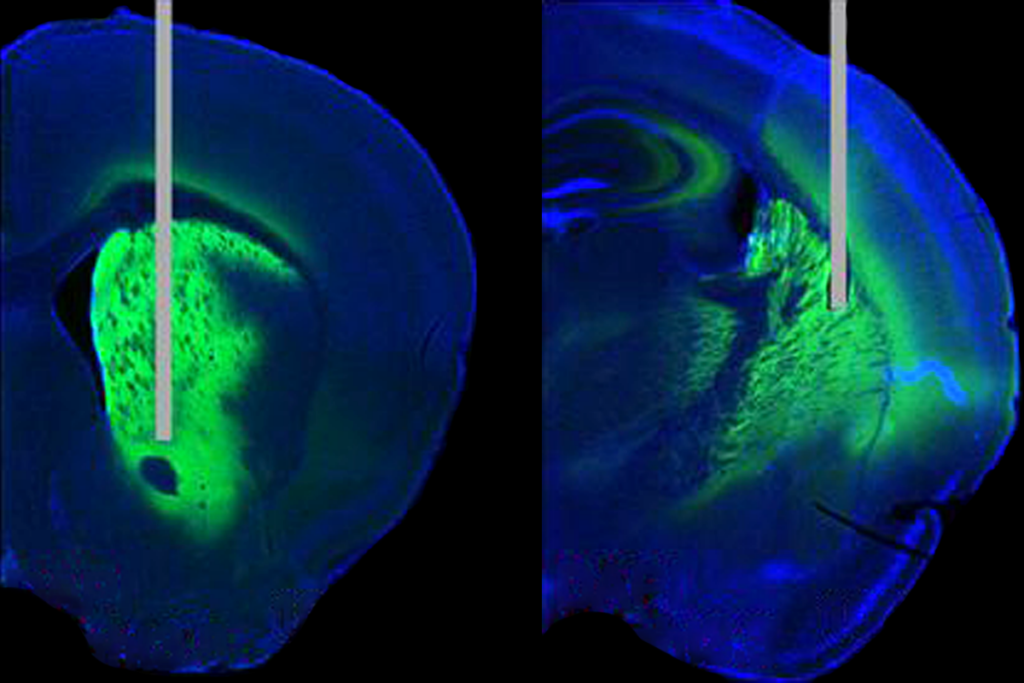A wearable device can, for the first time, record and activate single neurons in people as they walk around in a lab or clinic, according to a new study of 12 adults with epilepsy.
The invention, called Neuro-stack, connects to the electrodes doctors already implant to monitor some people with epilepsy or other neurological conditions.
“The Neuro-stack platform is designed as a research tool,” says study investigator Uros Topalovic, a postdoctoral scholar in Nanthia Suthana’s lab at the University of California, Los Angeles. It could be used to investigate electrical stimulation to quell epileptic seizures, which may occur in nearly half of autistic people. It might also help identify individual neurons involved in everyday activities, such as spatial navigation and memory recall.
Until now, single-neuron research on freely moving behaviors was limited to lab animals. Previous studies recorded single-neuron activity in people, identifying neurons involved in theory of mind, memory, perception and decision-making, as well as those affected by conditions such as epilepsy and Parkinson’s disease. But that work used bulky neuron monitors that had to be carried on carts, largely limiting their use to stationary participants.
By contrast, Neuro-stack’s microchips take up a combined area of 113 square millimeters — small enough for people to carry by hand or in a backpack during their daily activities.
Despite its size, it can simultaneously record the activity of up to 32 single neurons, plus the local field potential activity — electrical signals emitted when neurons fire in sync — in up to 128 spots in the brain. A person can wear multiple Neuro-stack devices to increase the amount of data collected, Topalovic says.
Generally, “brain recordings from patients still use the methods of the 1960s,” and the new device “is about to change this forever,” says György Buzsáki, professor of neuroscience at New York University, who did not take part in this research. This device aims “to improve the comfort of brain-implanted patients and collect clinical and scientific data more effectively,” he says. “A win-win situation.”
T
The device detected an increase in low-frequency theta brain waves when the volunteers walked near walls in their hospital rooms, showing “remarkable similarities with brain signals in experimental animals,” Buzsáki says, which suggests that decades of single-neuron monitoring in animals may apply to people. “Now one can compare apples and apples.”
It also detected neuronal activity in the medial temporal lobe as one participant completed a memory task: recalling as many words as possible from a list of 10 after a 30-second distraction. A machine-learning algorithm trained on neuronal activity data recorded while the participant memorized a word could predict in real time with 69 percent accuracy whether they would remember it or not. The scientists detailed their findings online 20 February in Nature Neuroscience.
Neuro-stack further proved capable of delivering electrical stimulation to three participants, and doing so more flexibly than current implantable devices can — for instance, it offers greater customization in the shape and timing of its electrical pulses. This feature may help to expand brain-stimulation research, which in turn may lead to more effective therapies for brain disorders, the researchers say.
R
And they can also combine it with other technologies, such as virtual reality, “to expand its applications and deepen our understanding of the brain’s functioning in naturalistic settings,” Topalovic says.
Because the device’s connections to the implanted electrodes are still wired, its neural recordings are susceptible to errors caused by participants’ movements, Topalovic cautions. Future research is needed to test Neuro-stack’s safety and reliability in a variety of settings, he adds, and to make it more compact and cost-effective.
“Many companies could mass-produce such devices overnight — this current device is way less complex than the first generation of iPhones,” Buzsáki says. “But there are only a few dozen medical institutions in the world that need such devices. Therefore, the cost investment is huge.”
Beyond epilepsy research, Neuro-stack may one day help to analyze social behavior, a key area in which autistic and neurotypical people differ, says Sameer Sheth, professor of neurosurgery, psychiatry, behavioral sciences and neuroscience at the Baylor College of Medicine in Houston, Texas, who was not part of this study.
“To study the neural bases for these behaviors, we ideally need to measure them in naturally occurring settings … as individuals navigate through their real lives,” Sheth says. “Such naturalistic data would undoubtedly shed even more light on the underlying neurophysiology.”




